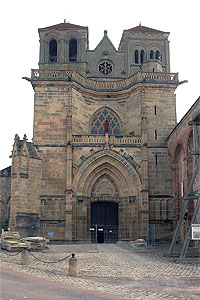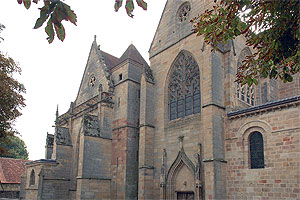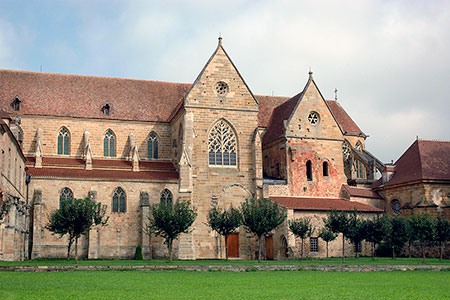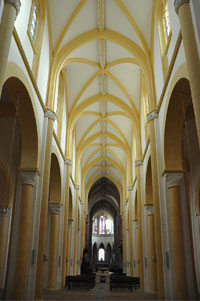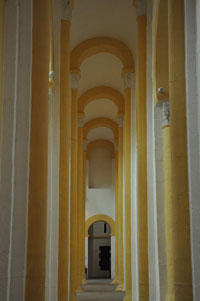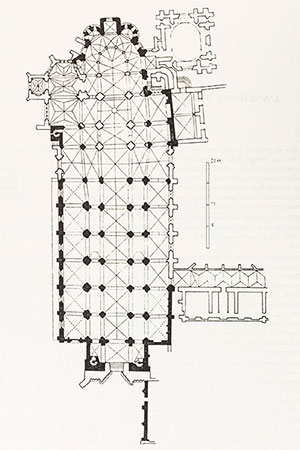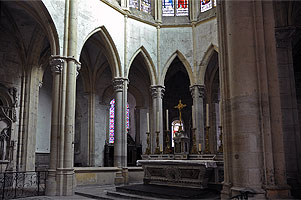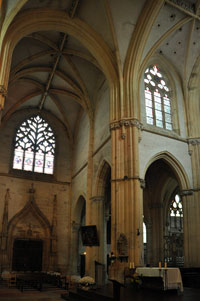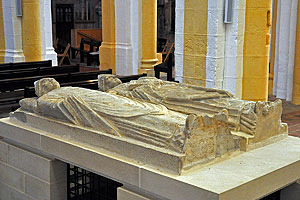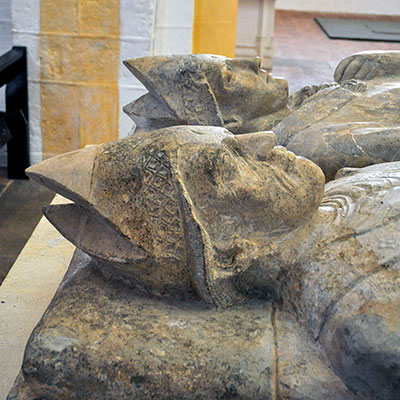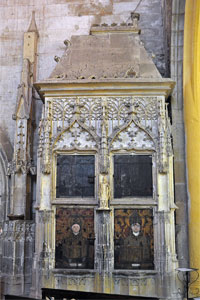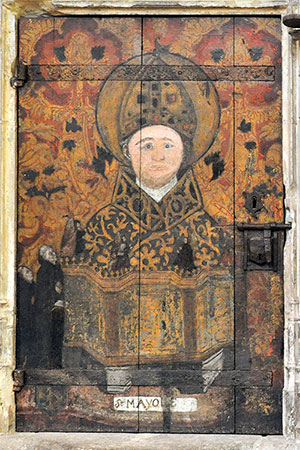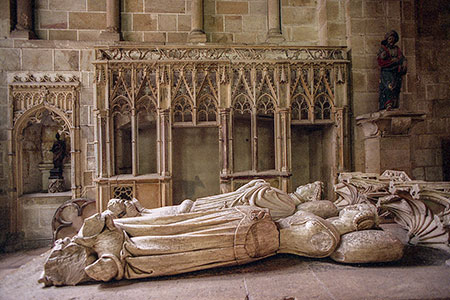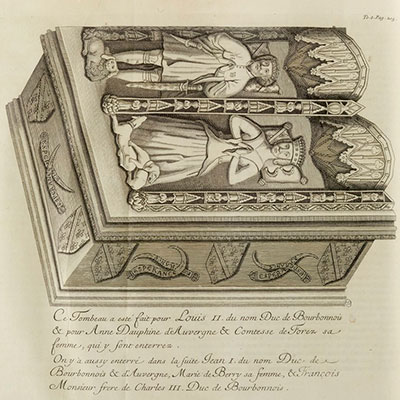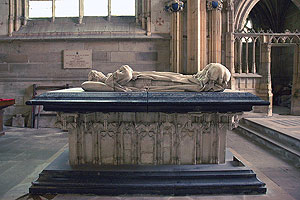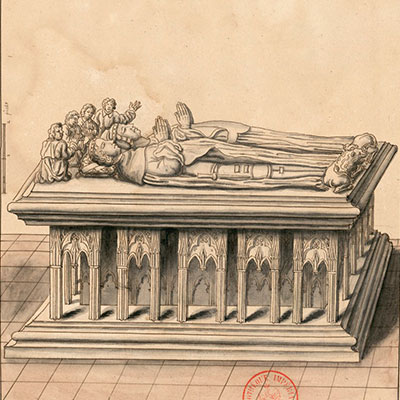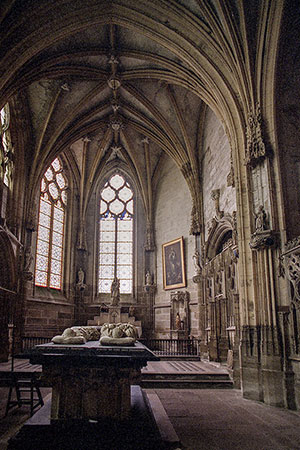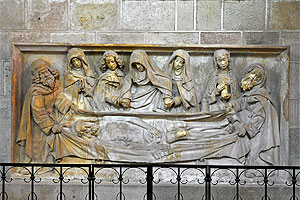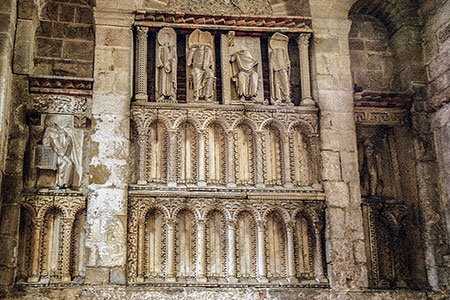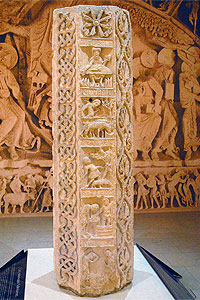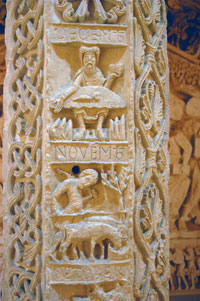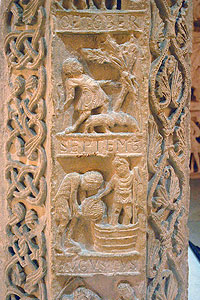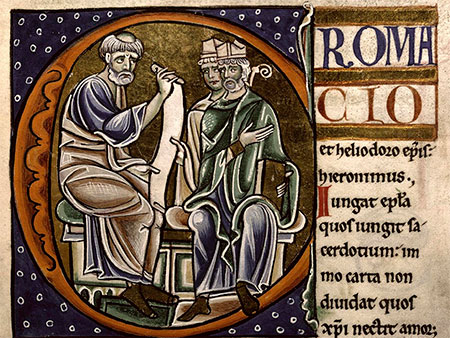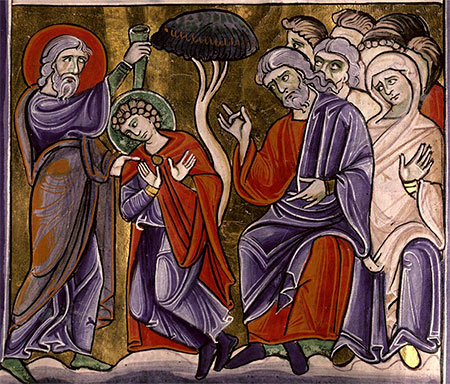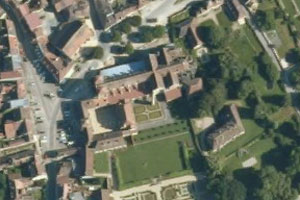Priory of Saint-Pierre de Souvigny
Silviniacum / Saint-Pierre-et-Saint-Paul de Souvigny
(Souvigny, Allier)
Between the years 915 and 920, the noble Aymard of Bourbon donated to the Abbey of Cluny, founded only a few years earlier, some properties he owned at Souvigny, which included a church dedicated to Saint Peter. That church, with a rectangular plan and an apse to the east, was probably built shortly before the donation. Around the mid-10th century, monastic life began on the site as a priory dependent on the great Burgundian abbey.
The priory church was enlarged during the time of Maiolus of Cluny (abbot between 954 and 994), probably between 960 and 994. The new building occupied the three central naves of the present church, though it was shorter. The priory grew and prospered thanks to the influence of the abbots of Cluny, Maiolus and Odilo, as well as to the patronage of the House of Bourbon. In 994, while travelling to the Abbey of Saint-Denis (Seine-Saint-Denis), Maiolus died at Souvigny and, due to popular devotion, his body was buried there. His sanctity and the miracles attributed to him made Souvigny an important pilgrimage centre.
Odilo, disciple and successor of Saint Maiolus as abbot of Cluny, stayed frequently at Souvigny and promoted a new enlargement of the church. The increase in pilgrimage and devotion made it necessary to lengthen the building, add a transept, and construct a large chancel. A spacious galilee was also built at the western end. The new church was consecrated in 1063. Odilo, who was abbot of Cluny between 994 and 1048, also died at Souvigny. Popular veneration of Saints Maiolus and Odilo continued over the following centuries.
Later, the saints’ tombs were given greater prominence: in 1095, Pope Urban II inaugurated a monumental tomb at the centre of the nave, where their remains were gathered. In the 12th century, two additional side aisles were added, making a church of five naves; the naves were further lengthened and a new chevet was built with an ambulatory and five radiating chapels. The growing influx of pilgrims and the deteriorated condition of the old church led to its reconstruction in the 15th century, in Gothic style.
At that time, the chevet was rebuilt and the galilee removed. The reliquary cabinet of the saints dates from 1440, when some relics were moved, though the funerary monument with the effigies of the abbots remained in place. The priory church also became the burial site of several members of the House of Bourbon. Despite later losses, the tombs of Louis II of Bourbon (1337-1410) and his wife Anne of Auvergne, as well as those of Charles I of Bourbon (1401-1456) and Agnes of Burgundy, are still preserved.
During the 17th and 18th centuries, several monastic buildings and the cloister were rebuilt. The development of these successive construction phases, both of the church and of the monastic complex, has been reconstructed through archaeological research, since Souvigny, despite its historical importance, has little surviving documentation due to destruction and the loss of archives.
In 1791, the monastic community was forced to disperse during the Revolution. The church was damaged, the saints’ tombs were destroyed, and most of the relics and the library were lost. Eventually, the building became a parish church, which ensured its preservation. In 1837, it was listed as a Historic Monument. Excavations carried out in 2001 uncovered the tomb of Saints Maiolus and Odilo, which was reconstructed with the elements recovered.
- ALBUCHER, Jean-Claude; i altres (2007). L'église Saint-Pierre-Saint-Paul Souvigny (Allier). Souvigny: Ville de Souvigny
- BEAUNIER, Dom (1912). Abbayes et prieurés de l'ancienne France. Vol. 5. Bourges. Abbaye de Ligugé
- BERTRAND, A. (1894). Mémoire sur les sépultures des seigneurs et ducs de Bourbon à Souvigny, Bessay et Champaigue (Allier). Société d'émulation et des beaux-arts du Bourbonnais
- CHAUDAGNE, Pierre (s.d.). Souvigny. Lyon: Lescuyer
- CHEVALIER, Pascale; i altres (2004). La fouille des tombeaux des saints abbés de Cluny, Mayeul et Odilon et les pèlerinages à Souvigny. Bulletin Monumental. Vol. 162/2
- CHEVALIER, Pascale; i altres (2007-08). Priorale Saint-Pierre de Souvigny (Allier), étude archéologique de la nef. BUCEMA, 11-12
- CÔTE, Léon (1942). Le Saint-Denis Bourbonnais. Histoire du prieuré clunisien de Souvigny. Moulins: C. Leblond
- GAUTIER, Marc-Edouard (2004). Les aménagements liturgiques de la prieurale de Souvigny et les tombeaux des saints abbés de Cluny, Mayeul et Odilon. Bulletin Monumental
- LARROQUE, François (1970). Souvigny. Les origines du prieuré. Revue Mabillon, vol. 58
- MARTINEZ, Damien (2016). Les premiers monastères d’Auvergne à la lumière de la documentation textuelle et archéologique (V e -X e siècle) : état de la question. BUCEMA, 10
- SAINT-MAUR, Congregació de (1720). Gallia Christiana in provincias ecclesiasticas distributa. Vol. 2. París: Typographia Regia
- VERGNOLE, Éliane (1988). L'ancienne priorale Saint-Pierre de Souvigny. Congrès archéologique de France, 146 ss. Bourbonnais. Société Française d'Archéologie


